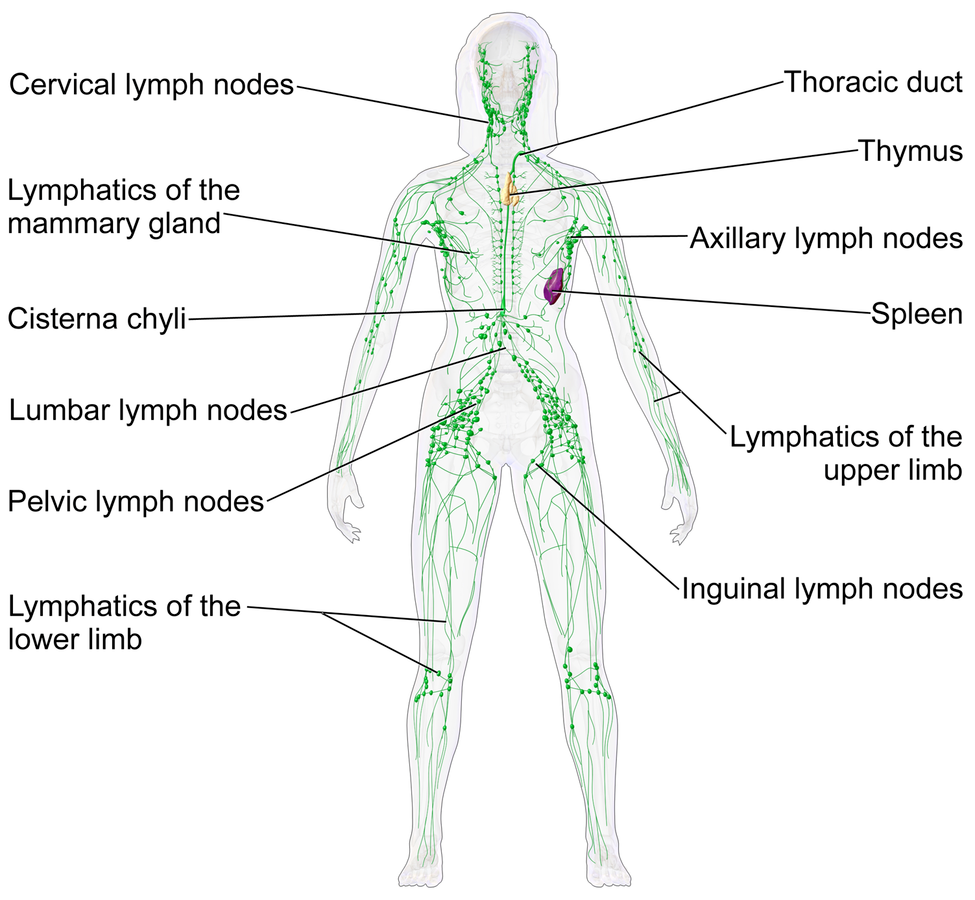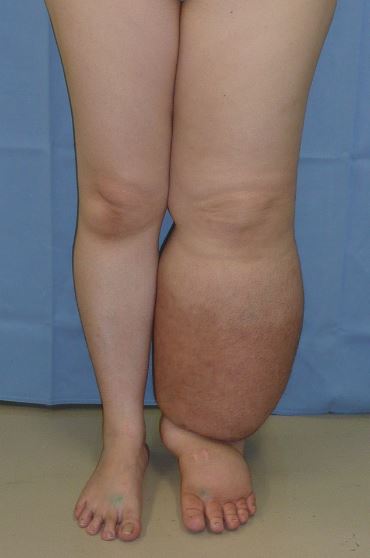About Lymphoedema
What is lymphoedema?
Lymphoedema is a long-term (chronic) condition that causes swelling in the body's tissues. It can affect any part of the body, but usually develops in the arms or legs.
Lymphoedema is caused by a problem with the lymphatic system, a network of vessels and glands spread throughout the body. The main functions of the lymphatic system are helping fight infection and draining excess fluid from tissues.
There are 2 main types of lymphoedema:
- primary lymphoedema – caused by faulty genes that affect the development of the lymphatic system; it can develop at any age, but usually starts during infancy, adolescence, or early adulthood.
- secondary lymphoedema – caused by damage to the lymphatic system or problems with the movement and drainage of fluid in the lymphatic system; it can be the result of a cancer treatment, an infection, injury, inflammation of the limb, or a lack of limb movement.
Lymphoedema is thought to affect more than 200,000 people in the UK. Primary lymphoedema is rare and secondary lymphoedema is much more common.
Secondary lymphoedema often affects people with cancers that involve the lymph system or who've had treatment to the lymph nodes, such as breast cancer.

Lymphatic system
Blausen.com staff (2014). "Medical gallery of Blausen Medical 2014". Wiki Journal of Medicine 1 (2). DOI:10.15347/wjm/2014.010. ISSN 2002-4436.

Lower limb lymphoedema
Image source: Medical doctors. No changes made.
Image licensed under the
Creative Commons Attribution-Share Alike 3.0 Unported license.
What are the symptoms of lymphoedema?
- Distortion/enlargement of limb shape
- Permanent swelling
- Hard, wood-like skin
- Reduced mobility
- Skin folds
- Wart-like growths (papillomatosis)
- Leaking fluid (lymphorrhoea)
How can the symptoms of lymphoedema be successfully managed?
The recommended treatment for lymphoedema is decongestive lymphatic therapy (DLT).
DLT is not a cure for lymphoedema, but it can help control the symptoms. Although it takes time and effort, the treatment can be used to bring lymphoedema under control.
There are 4 components to DLT:
- compression bandages – to complement exercise by moving fluid out of the affected limb and minimise further build-up
- skin care – to keep the skin in good condition and reduce the chances of infection
- exercises – to use muscles in the affected limb to improve lymph drainage
- specialised massage techniques – known as manual lymphatic drainage (MLD); this stimulates the flow of fluid in the lymphatic system and reduces swelling
DLT is an intensive phase of therapy, during which you may receive daily treatment for several weeks to help reduce the volume of the affected body part.
This is followed by a second phase called the maintenance phase. The patient is encouraged to take over their own care going forward using simple self-massage techniques, wearing compression garments, and continuing to exercise and look after their skin.
This treatment phase aims to maintain the reduced size of the affected body part.

Where can I find further information or support?
If you think you are experiencing symptoms of lymphoedema, please contact your GP or nurse as soon as possible.
The NHS guide to Lymphoedema is a valuable resource for understanding the condition; you can access it here.
The Lymphoedema Support Network is a registered UK charity which provides support and advice to patients and carers.
The British Lymphology Society offers support for carers and professionals.